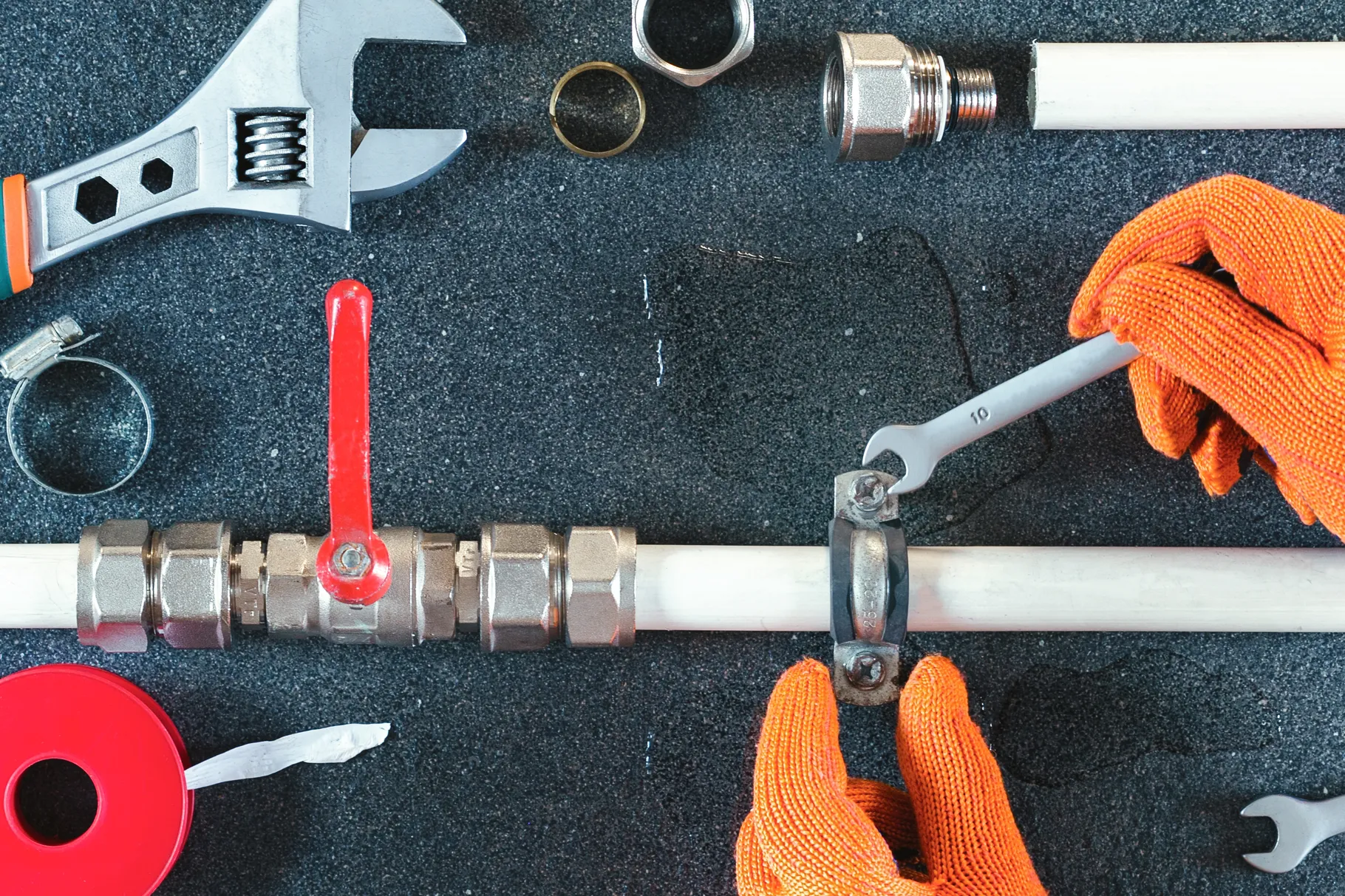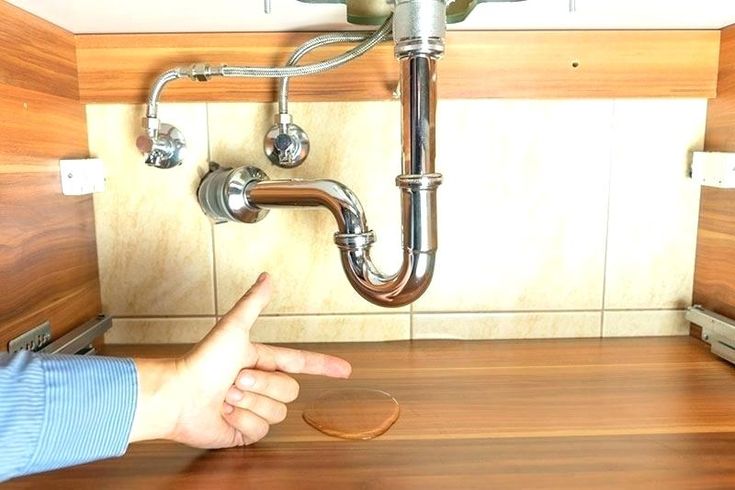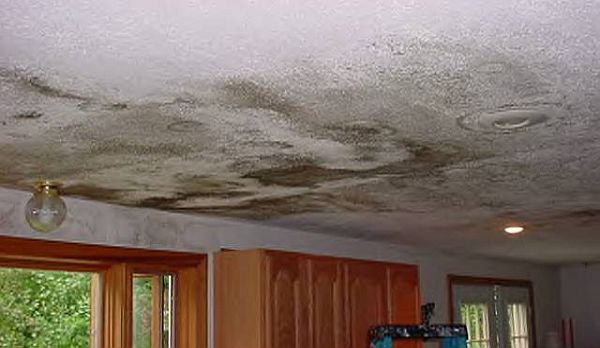Door jamb vs door frame – What is the difference?
A door jamb and a door frame are two different things. So, what is a
Picking up the best sealant for leaking pipes totally depends on the material of the pipe – PVC, copper, galvanized iron, polyurethane, etc. It is also important to consider the type of water line (cold or hot). You can easily find some other multifunctional (temporary fix) materials, like mesh tape shapes, available at hardware or building supply stores, and even tile suppliers will occasionally offer a couple. However, for them to properly advise you, know what material the pipe is made of when you go to buy it.

Image Source: thisoldhouse.com
M-Seal is a sealant used by plumbers, plumbing contractors, auto mechanics, and homeowners (DIY) for leaking pipes both in new construction and repair projects. The four main applications of M-seal are sealing, joining, fixing, and building. It has become a popular household pipe sealant choice in India, due to its witty advertisement and easy usage. Moreover, it’s adaptable and simple to use. The product is available in three variants- M- Seal Regular, M- Seal Sanitary, and M- Seal Super.
See more about M-Seal ultra strong!
|
If you want to buy top-quality sealants from the best brands at Wholesale Prices, click on the link given below :
For more details, contact below:
|
Homeowners are often focused on the themes and style of their kitchens and overlook the plumbing aspect. However, they forget that owning a home inevitably entails dealing with plumbing problems. While some issues are related to outdated fixtures or typical wear and tear on plumbing gear, other issues could be brought on by how specific systems are used and maintained. Ignoring any minor plumbing issue for a long time can cause a lot of water wastage and spread damage to other fittings around the defaulting unit. Thus, it is critical to use the best quality plumbing fittings. An efficient plumbing system is integral for any kitchen to work smoothly. So, it is important to know how to fix kitchen plumbing under the sink, floor, etc. Let us understand the common kitchen plumbing problems and how to solve them while renovating your kitchen.

Image Source: Pinterest
1. Using incompatible pipes: Sometimes homeowners combine pipes that are not compatible with one another. This often leads to pipe corrosion and leakages, which eventually damage your newly renovated kitchen. Sometimes, the pipes don’t match well with appliances and cause extremely low water pressure. Last but not least, avoid joining several fixtures to a single set of pipes. The reason is that multiple fixtures can strain the plumbing system and will also result in weakened water pressure.
2. Selecting the cabinets and countertops before the sink: The problem with this is that you end up selecting the incorrect size of the sink. Here’s how to fix kitchen plumbing under the sink! The best option is to have the cabinet and countertops constructed around the design and size of the sink. Choosing the sink first will make it easier for the contractor and save you money and time.
3. Leaking faucets: There are numerous potential causes of a leaking faucet. A worn-out washer is a common reason for a leaking faucet because of the constant friction that results from the water being driven into the valve seat. Another possibility is a rusted valve seat, which connects the compression unit’s spout and faucet. If the base of the faucet is dripping, the O-ring seal is probably worn out. In this case, replace the O-ring seal, washer, or cartridge. If replacing the O-ring and washer or cartridge doesn’t resolve the issue, it may be time to replace the entire unit with the help of a qualified professional.
To know more about plumbing issues, read: The perfect plumbing system: Mr. Nilesh Gandhi
Expand >>Plumbing usually tends to get the least share of mind of all the stakeholders – builders, contractors, and homeowners. This is due to the perception that plumbing doesn’t directly add to the aesthetics of a building. However, this seemingly inexpensive aspect of construction can cost us dearly, if not done right. The problem, contrary to popular belief, lies with plumbing skills and their understanding. Let us have a look at some common mistakes which can make you pay a high cost for plumbing.

1. Incorrect mixing of pipes and fittings
If plumbing pipes and fittings are of different materials, they will never bond well, and this would result in leakages. For example, CPVC/GI pipes should never be used with UPVC fittings and vice versa.
2. Lack of proper threading
In GI pipes, plumbers shy away from doing the right amount of threading required either to save time or due to ignorance. This again results in poor joints which causes leakages. The problem is getting worse because our nation’s plumbing systems are largely concealed. In fact, we should learn from the west about open plumbing systems, wherein pipes travel the least distances in the walls. Though it could pose some aesthetic challenges but a good architect can always find a solution to that.
3. Use of unbranded chemicals and adhesives for sealing the UPVC / CPVC pipes with fittings
The cost difference between branded and unbranded chemicals is not much but plumbers tend to use unbranded ones which leads to poor joint fittings causing leakages, and damage to the building structure and aesthetics over a period of time.
The overall responsibility of getting the right plumbing practices in place lies with all of us, starting from the dealers to the homeowners. The price of plumbing is negligible compared to the cost associated with poor plumbing practices. So, let’s take plumbing seriously!
Expand >>You don’t have to blow the budget for a new bathroom. All bathroom designs require an effective plumbing design, however, plumbing changes while renovating can be expensive. So, here are 7 tips that will help you cut down your plumbing cost while designing or renovating your bathroom.

Image Source: Vaillancourt Plumbing
Buy high-quality plumbing fittings at Best Price!
Expand >>Energy- and water-saving design is the foundation of an effective plumbing system. A good design makes use of cutting-edge materials and integrates short runs between plumbing components. A plumbing design must have two systems: one that provides water and one that removes waste. Additionally, the drainage system contains vent stacks that let drain pipes breathe and transport sewer waste through the sewer pipes.
You must adhere to local building codes while designing a home’s plumbing, drain, waste, and vent systems in order to assure design conformity.
Since the plumbing is a single integrated system, it flows between the locations that need plumbing. The DWV (drain, waste, vent) system, typically runs alongside or close to the water delivery system. So, consider putting the room that requires plumbing closer together to save on materials and improve the system’s effectiveness.
Knowing how your home’s plumbing system functions will help you select the best and safest pipes and reduce the likelihood of plumbing emergencies. You can have a stress-free plumbing system for years with appropriate installation and servicing. The three main components of every plumbing system are pipe fittings, fixtures, and drainage.
A water leak can cost you a fortune and also cause a lot of structural damage, so it’s important to find it quickly. However, finding a pipe leak in a concealed plumbing system can be confusing. Thus, to help you figure out a pipe leak behind a wall or under the floor, we have listed 6 common indications. These include:
You most likely have a hidden leak if you don’t see any obvious leaks coming from your faucets, toilets, or other water-using devices. The best course of action, in that case, is to get in touch with a professional to locate and repair a hidden water leak.
A home’s plumbing system uses different kinds of pipes for various functions, such as fresh water supply, waste drainage, irrigation, gas pipes for appliances, etc. In new constructions, plastic pipes of various types are generally used, as opposed to an older plumbing system that may be dominated by cast iron and galvanized iron pipes.
Below listed are some of the common plumbing pipe materials used for water supply, gas pipelines, and drainage systems.
Most of us naturally believe that concealed plumbing is the way to go, but there are some specific justifications for keeping a home’s piping exposed. If you’re trying to decide between exposed plumbing or concealing it in the walls, here are the four important factors you must take into account:
Expand >>
The way the plumbing system is set up and operates should be one of the key factors taken into account while building your home. You can save a lot of energy and expense if the plumbers install your new plumbing system properly. The best approach is to look for skilled and experienced plumbers in your area. Below listed are other few things you need to take into account while buying/renting a new home:
Picking up the best sealant for leaking pipes totally depends on the material of the pipe – PVC, copper, galvanized iron, polyurethane, etc. It is also important to consider the type of water line (cold or hot). You can easily find some other multifunctional (temporary fix) materials, like mesh tape shapes, available at hardware or building supply stores, and even tile suppliers will occasionally offer a couple. However, for them to properly advise you, know what material the pipe is made of when you go to buy it.

Image Source: thisoldhouse.com
M-Seal is a sealant used by plumbers, plumbing contractors, auto mechanics, and homeowners (DIY) for leaking pipes both in new construction and repair projects. The four main applications of M-seal are sealing, joining, fixing, and building. It has become a popular household pipe sealant choice in India, due to its witty advertisement and easy usage. Moreover, it’s adaptable and simple to use. The product is available in three variants- M- Seal Regular, M- Seal Sanitary, and M- Seal Super.
See more about M-Seal ultra strong!
|
If you want to buy top-quality sealants from the best brands at Wholesale Prices, click on the link given below :
For more details, contact below:
|
Homeowners are often focused on the themes and style of their kitchens and overlook the plumbing aspect. However, they forget that owning a home inevitably entails dealing with plumbing problems. While some issues are related to outdated fixtures or typical wear and tear on plumbing gear, other issues could be brought on by how specific systems are used and maintained. Ignoring any minor plumbing issue for a long time can cause a lot of water wastage and spread damage to other fittings around the defaulting unit. Thus, it is critical to use the best quality plumbing fittings. An efficient plumbing system is integral for any kitchen to work smoothly. So, it is important to know how to fix kitchen plumbing under the sink, floor, etc. Let us understand the common kitchen plumbing problems and how to solve them while renovating your kitchen.

Image Source: Pinterest
1. Using incompatible pipes: Sometimes homeowners combine pipes that are not compatible with one another. This often leads to pipe corrosion and leakages, which eventually damage your newly renovated kitchen. Sometimes, the pipes don’t match well with appliances and cause extremely low water pressure. Last but not least, avoid joining several fixtures to a single set of pipes. The reason is that multiple fixtures can strain the plumbing system and will also result in weakened water pressure.
2. Selecting the cabinets and countertops before the sink: The problem with this is that you end up selecting the incorrect size of the sink. Here’s how to fix kitchen plumbing under the sink! The best option is to have the cabinet and countertops constructed around the design and size of the sink. Choosing the sink first will make it easier for the contractor and save you money and time.
3. Leaking faucets: There are numerous potential causes of a leaking faucet. A worn-out washer is a common reason for a leaking faucet because of the constant friction that results from the water being driven into the valve seat. Another possibility is a rusted valve seat, which connects the compression unit’s spout and faucet. If the base of the faucet is dripping, the O-ring seal is probably worn out. In this case, replace the O-ring seal, washer, or cartridge. If replacing the O-ring and washer or cartridge doesn’t resolve the issue, it may be time to replace the entire unit with the help of a qualified professional.
To know more about plumbing issues, read: The perfect plumbing system: Mr. Nilesh Gandhi
Expand >>Plumbing usually tends to get the least share of mind of all the stakeholders – builders, contractors, and homeowners. This is due to the perception that plumbing doesn’t directly add to the aesthetics of a building. However, this seemingly inexpensive aspect of construction can cost us dearly, if not done right. The problem, contrary to popular belief, lies with plumbing skills and their understanding. Let us have a look at some common mistakes which can make you pay a high cost for plumbing.

1. Incorrect mixing of pipes and fittings
If plumbing pipes and fittings are of different materials, they will never bond well, and this would result in leakages. For example, CPVC/GI pipes should never be used with UPVC fittings and vice versa.
2. Lack of proper threading
In GI pipes, plumbers shy away from doing the right amount of threading required either to save time or due to ignorance. This again results in poor joints which causes leakages. The problem is getting worse because our nation’s plumbing systems are largely concealed. In fact, we should learn from the west about open plumbing systems, wherein pipes travel the least distances in the walls. Though it could pose some aesthetic challenges but a good architect can always find a solution to that.
3. Use of unbranded chemicals and adhesives for sealing the UPVC / CPVC pipes with fittings
The cost difference between branded and unbranded chemicals is not much but plumbers tend to use unbranded ones which leads to poor joint fittings causing leakages, and damage to the building structure and aesthetics over a period of time.
The overall responsibility of getting the right plumbing practices in place lies with all of us, starting from the dealers to the homeowners. The price of plumbing is negligible compared to the cost associated with poor plumbing practices. So, let’s take plumbing seriously!
Expand >>You don’t have to blow the budget for a new bathroom. All bathroom designs require an effective plumbing design, however, plumbing changes while renovating can be expensive. So, here are 7 tips that will help you cut down your plumbing cost while designing or renovating your bathroom.

Image Source: Vaillancourt Plumbing
Buy high-quality plumbing fittings at Best Price!
Expand >>Energy- and water-saving design is the foundation of an effective plumbing system. A good design makes use of cutting-edge materials and integrates short runs between plumbing components. A plumbing design must have two systems: one that provides water and one that removes waste. Additionally, the drainage system contains vent stacks that let drain pipes breathe and transport sewer waste through the sewer pipes.
You must adhere to local building codes while designing a home’s plumbing, drain, waste, and vent systems in order to assure design conformity.
Since the plumbing is a single integrated system, it flows between the locations that need plumbing. The DWV (drain, waste, vent) system, typically runs alongside or close to the water delivery system. So, consider putting the room that requires plumbing closer together to save on materials and improve the system’s effectiveness.
Knowing how your home’s plumbing system functions will help you select the best and safest pipes and reduce the likelihood of plumbing emergencies. You can have a stress-free plumbing system for years with appropriate installation and servicing. The three main components of every plumbing system are pipe fittings, fixtures, and drainage.
A water leak can cost you a fortune and also cause a lot of structural damage, so it’s important to find it quickly. However, finding a pipe leak in a concealed plumbing system can be confusing. Thus, to help you figure out a pipe leak behind a wall or under the floor, we have listed 6 common indications. These include:
You most likely have a hidden leak if you don’t see any obvious leaks coming from your faucets, toilets, or other water-using devices. The best course of action, in that case, is to get in touch with a professional to locate and repair a hidden water leak.
A home’s plumbing system uses different kinds of pipes for various functions, such as fresh water supply, waste drainage, irrigation, gas pipes for appliances, etc. In new constructions, plastic pipes of various types are generally used, as opposed to an older plumbing system that may be dominated by cast iron and galvanized iron pipes.
Below listed are some of the common plumbing pipe materials used for water supply, gas pipelines, and drainage systems.
Most of us naturally believe that concealed plumbing is the way to go, but there are some specific justifications for keeping a home’s piping exposed. If you’re trying to decide between exposed plumbing or concealing it in the walls, here are the four important factors you must take into account:
Expand >>
The way the plumbing system is set up and operates should be one of the key factors taken into account while building your home. You can save a lot of energy and expense if the plumbers install your new plumbing system properly. The best approach is to look for skilled and experienced plumbers in your area. Below listed are other few things you need to take into account while buying/renting a new home: